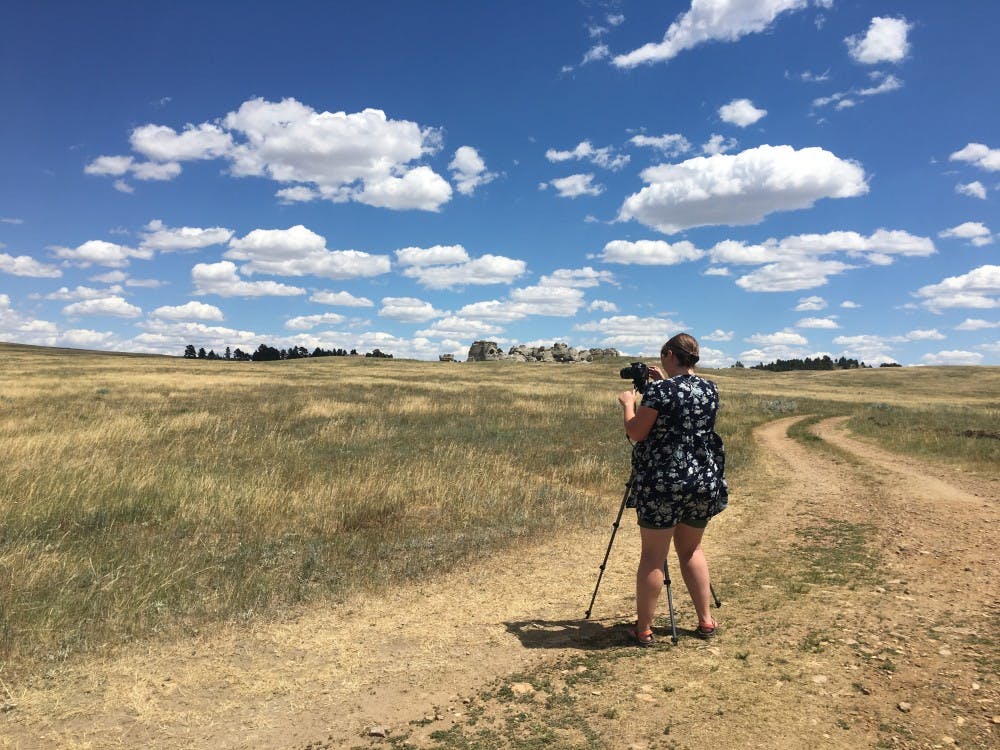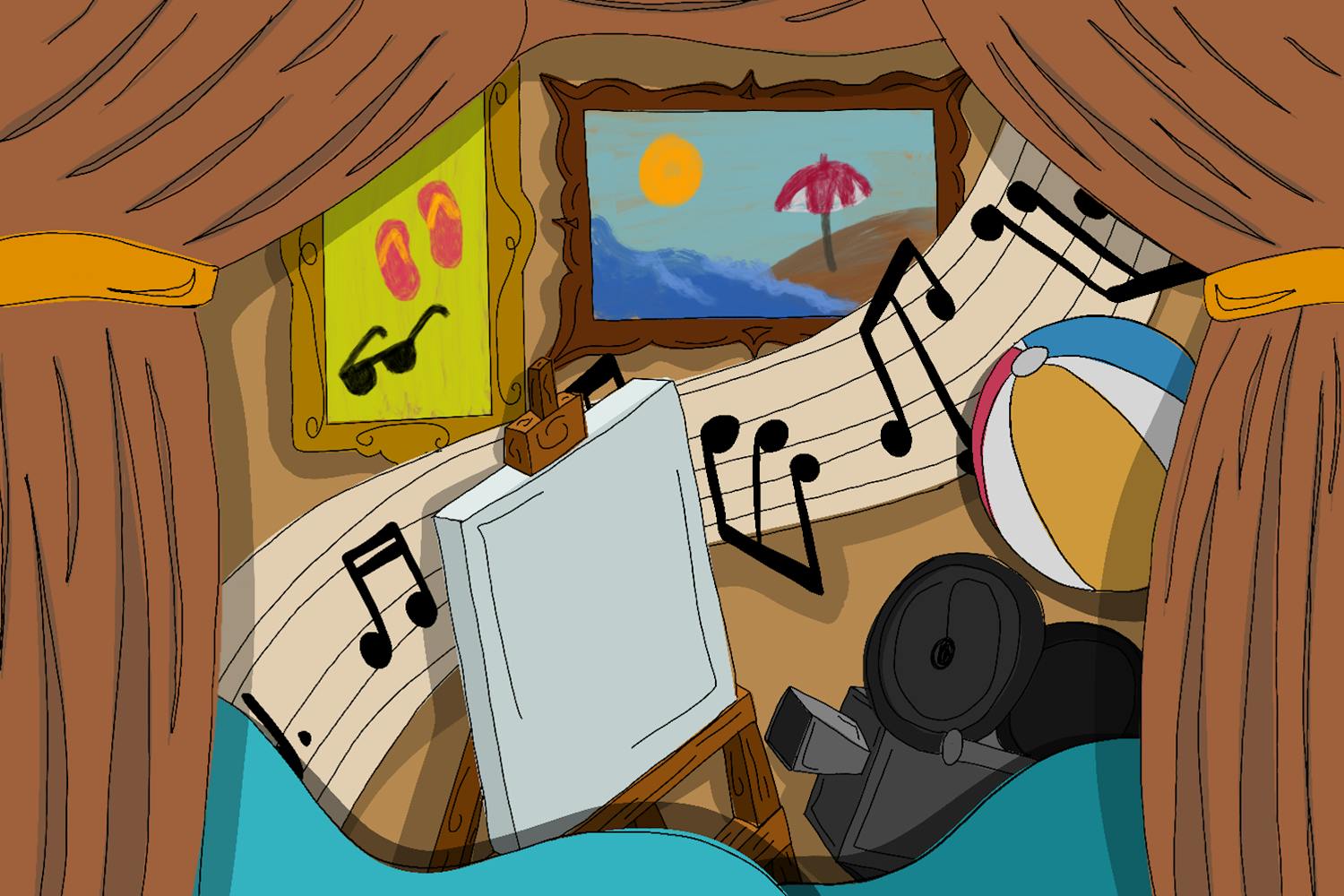Popular images of the American West often include rugged cowboys, tales of victory and vengeance and ultimately, the narrative that the country was built upon, masculine bravery.
ASU art masters student Alison Sweet wants to correct that narrative.
“Who controls the narrative really controls popular ideas about something and can control politics and social structures,” Sweet said. “People forget how important it is to know history and to know what has happened.”
Sweet’s MFA exhibition, “Westering Women,” focuses on the women who have otherwise been erased from American history.
It started when she found a set of photographs taken by her great-grandfather at his homestead in eastern Montana in the early 20th century.
“As I started doing the historical research and learning about the history of the American West, I learned that the popular history we understand is really filled with myths,” Sweet said. “In the myths of the American West, a lot of people were written out.”
The exhibition, which will go on display beginning next Friday at downtown Phoenix’s Grant Street Studios, has several elements, bringing Sweet’s studies in intermedia art to life on the studio walls.
First, she cut men out of the photographs and replaced them using a trade historically deemed women’s work: sewing.
Sweet replaced the negative space of the men’s missing silhouettes with fabric patterns, absences that serve to place more emphasis on the women in the photographs and reverse the traditional emphasis on men’s roles.
“It’s stitching women’s work back into history,” she said.
The patterns used are even relevant to the time period in the photographs, said Muriel Magenta, a professor of art at ASU and Sweet’s committee chair.
“She really went to great pains to research the quilt patterns, the fabrics, the important photographic locations,” Magenta said. “It’s documented like one would think of in a book.”
Sweet used Magenta's studio space in Tempe during the course of her project, where the creations drew attention from passersby.
“My students walk through and they all just are compelled to study these things and practically stick their noses into it to see the stitching, the fine stitchery and the patterns and how precise they are,” Magenta said.
Other elements of the exhibition include some of Sweet's great-grandfather’s photographs that she didn’t have to manipulate: The women in the photos were blurry, dark or otherwise unintentionally “deleted” by the photographer when the photo was taken.
“It’s an example of how sometimes unintentionally some people are deleted from history,” Sweet said.
A final element of the exhibition brought Sweet back to the actual location of the photographs, where she created a film on the Montana homestead about generations of women living and working in the West.
“It’s the anti-Western,” Sweet said. “Western and cowboy art focuses on the rugged, male individual, and it embraces violence and conflict and vengeance. This is my Western, that focuses on family and love and connection.”
The film features Sweet’s own mother in a commentary on how generations of women pass down values of the current social climate to their daughters.
The photographs are black and white, while the video brings the themes to color.
In the film, Sweet and her mother, Kathleen Snyder, create flower patterns using actual flour.
“The wind eventually blows them away,” Sweet said of the flour patterns. “They’re not documented. They’re gone, like women’s free work in the home.”
Women's erasure from history goes back to historian Frederick Jackson Turner and his work on the American West, now popularly referred to as the “Turner Thesis.”
“He was trying to say that the frontier is what made America great,” Sweet said.
But in a tale of white men conquering new land and establishing themselves as the actors of early American politics, everyone else was discarded when it came time to document.
Then, Hollywood picked up where historians left off.
“As women were not accurately documented, they were made up in these Western stories,” Sweet said. “Women were either madonnas, or helpless, or they were prostitutes. Those were the three that got digested into the popular knowledge of being accurate.”
Meredith Drum, an art professor at ASU and a committee member on the project, echoes Sweet’s idea that the writers of history shape how we remember it. When men were behind the camera and holding the pen, future generations saw the world through their eyes.
But many women have started to change that.
“As culture started to include more females as producers, as writers, as filmmakers, as historians, they were more interested a lot of the time for female writers to write about the female history,” Drum said. “It’s the change over who’s in control of documenting and keeping those stories alive.”
“Westering Women” will be on display beginning Oct. 13 at Step Gallery at Grant Street Studios in downtown Phoenix. It will be up through Oct. 21.
Reach the reporter at lallnatt@asu.edu or follow @LibbyAllnattASU on Twitter.
Like The State Press on Facebook and follow @statepress on Twitter.




